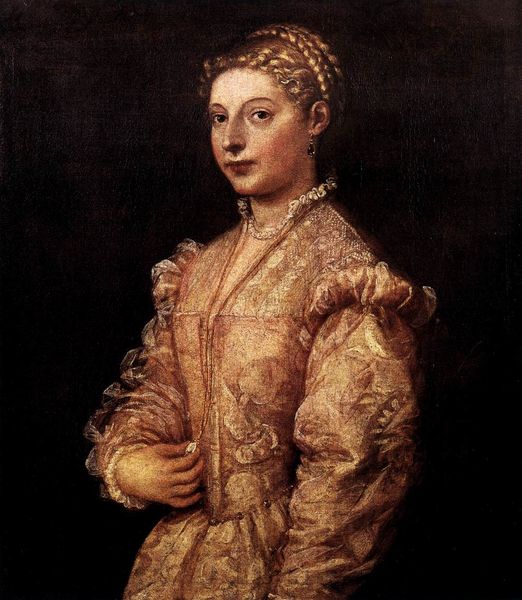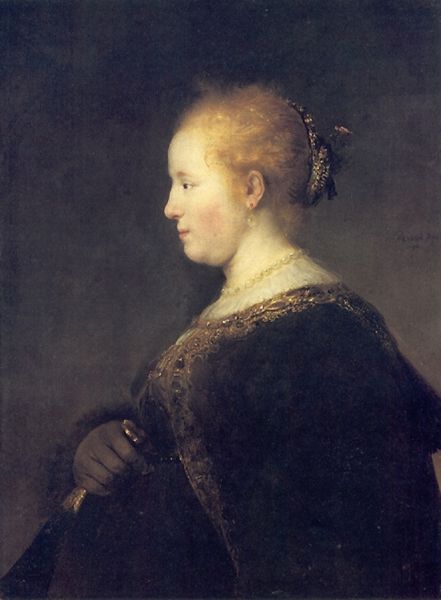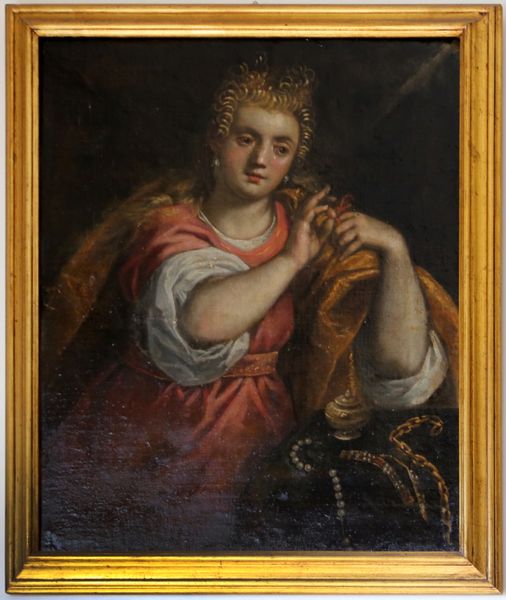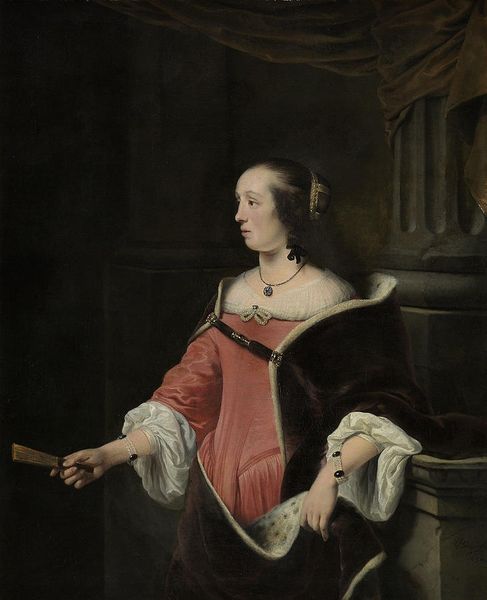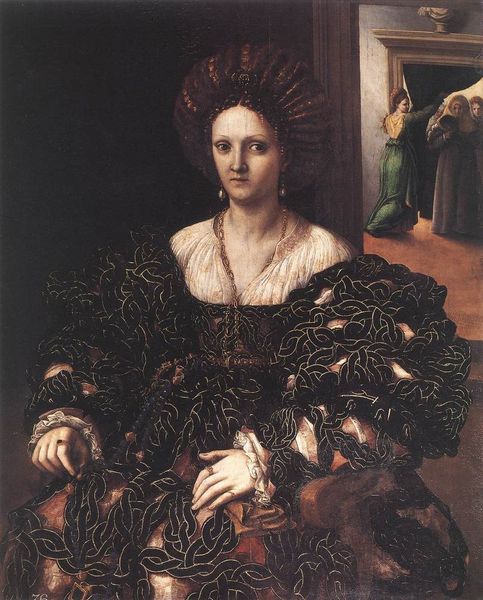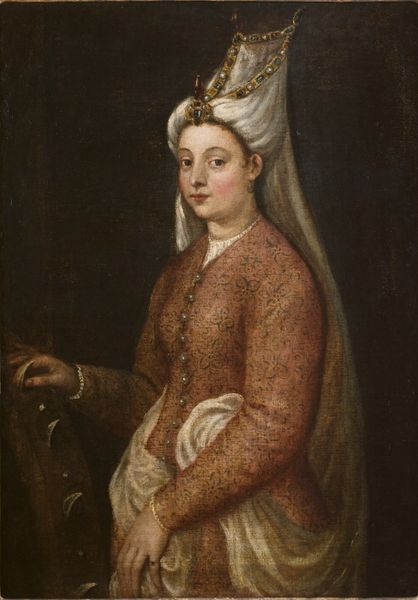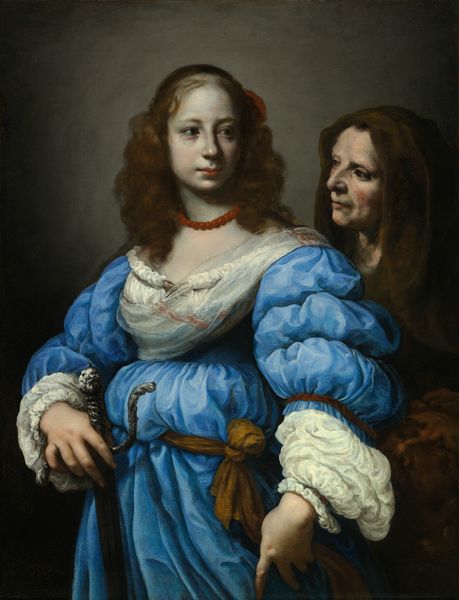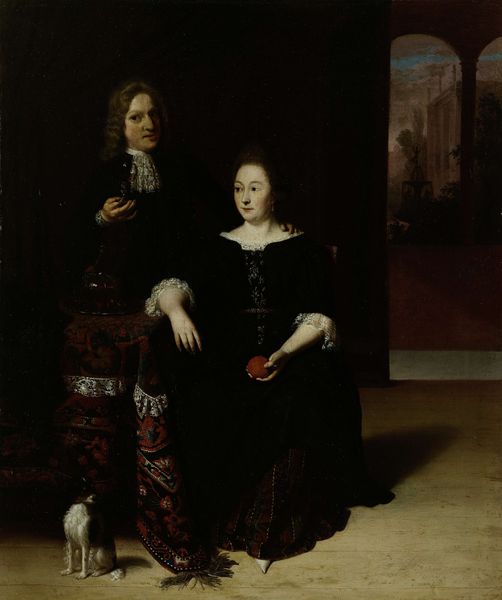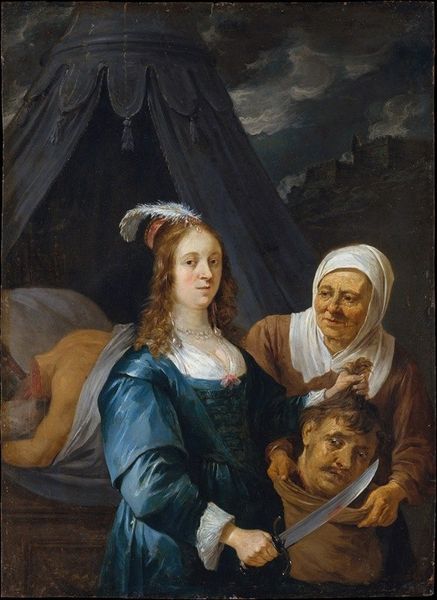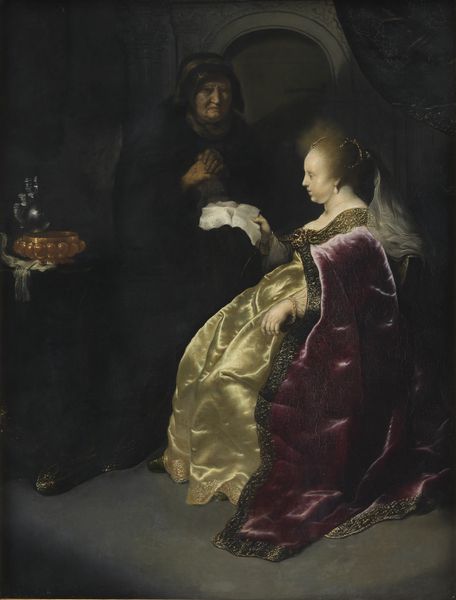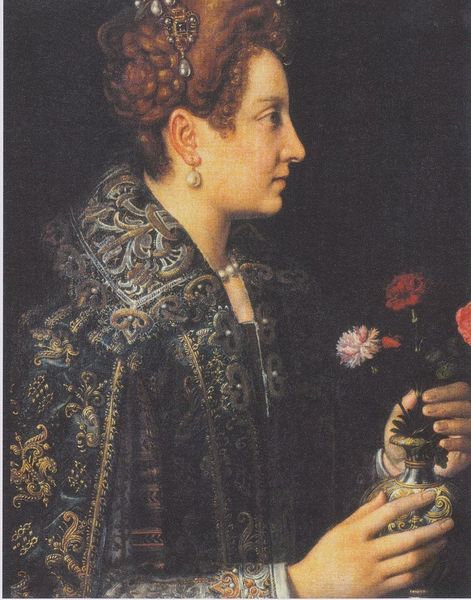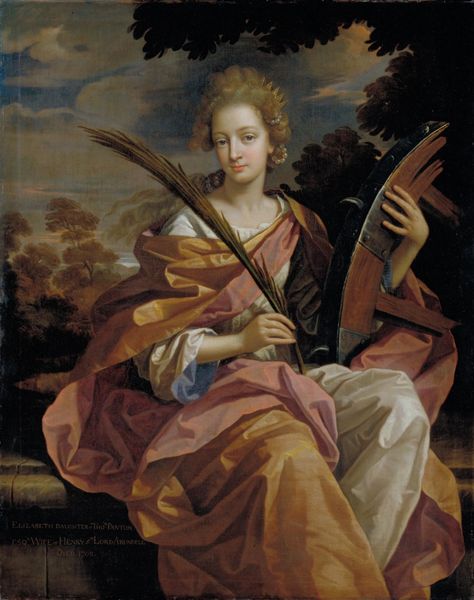
painting, oil-paint
#
portrait
#
character portrait
#
baroque
#
painting
#
oil-paint
#
sculpture
#
figuration
#
neo expressionist
#
costume
#
history-painting
#
lady
#
italian-renaissance
Dimensions: 130 x 110 cm
Copyright: Public domain
Curator: Looking at Lavinia Fontana's “Judith with the Head of Holofernes” from around 1600, I’m immediately struck by the theatricality of the scene. Editor: The textures jump out at me. The gleam of metal on the sword contrasts dramatically with the soft, yielding fabric. It speaks of the labor involved in producing both luxury and violence. How was this painting perceived within its own social context? Curator: Fontana was working in a male-dominated art world. Her success as a portraitist allowed her to take on ambitious subjects like this one, which catered to the growing taste for dramatic narratives within wealthy circles and religious institutions that functioned as powerful art patrons. This piece also subtly highlights her skill, both with the portrait and dramatic scenes. Editor: That’s fascinating. The choice of oil paint itself is so central here; allowing the detailed representation of textures from the sumptuous dress to the lifeless head, emphasizing material wealth and, dare I say, a rather grim transaction. But I wonder how Fontana sourced her materials and if she had workshops assisting her? Curator: Exactly! The art market in Bologna was very interested in skilled artisans. But getting back to our discussion on history; the figure of Judith as both a heroine and a controversial figure resonates. Considering Italy’s fractured political landscape, this historical narrative mirrors the nation's sense of precarious stability. This kind of painting played a critical role in defining and contesting virtue, power, and moral responsibility within a shifting social framework. Editor: A painting that tells multiple stories, not just one within the canvas but the very stories around its creation. From pigment production to her workshop arrangements, the creation of Fontana’s “Judith with the Head of Holofernes” gives us great insights into society itself. Curator: Indeed, seeing it not just as an artistic achievement but also a social object, reflecting both the individual talents and broad political, cultural currents of its time, is key. Editor: I agree; it makes you reconsider where you stand in art history and what stories you will tell from now on.
Comments
No comments
Be the first to comment and join the conversation on the ultimate creative platform.
